The rarest colour in nature, the bold pop of blue plants in the garden demands to be marveled at. If you’re on the hunt for more blue flowers, this list is the perfect place to start in order to grow a wave of blue flowering plants.
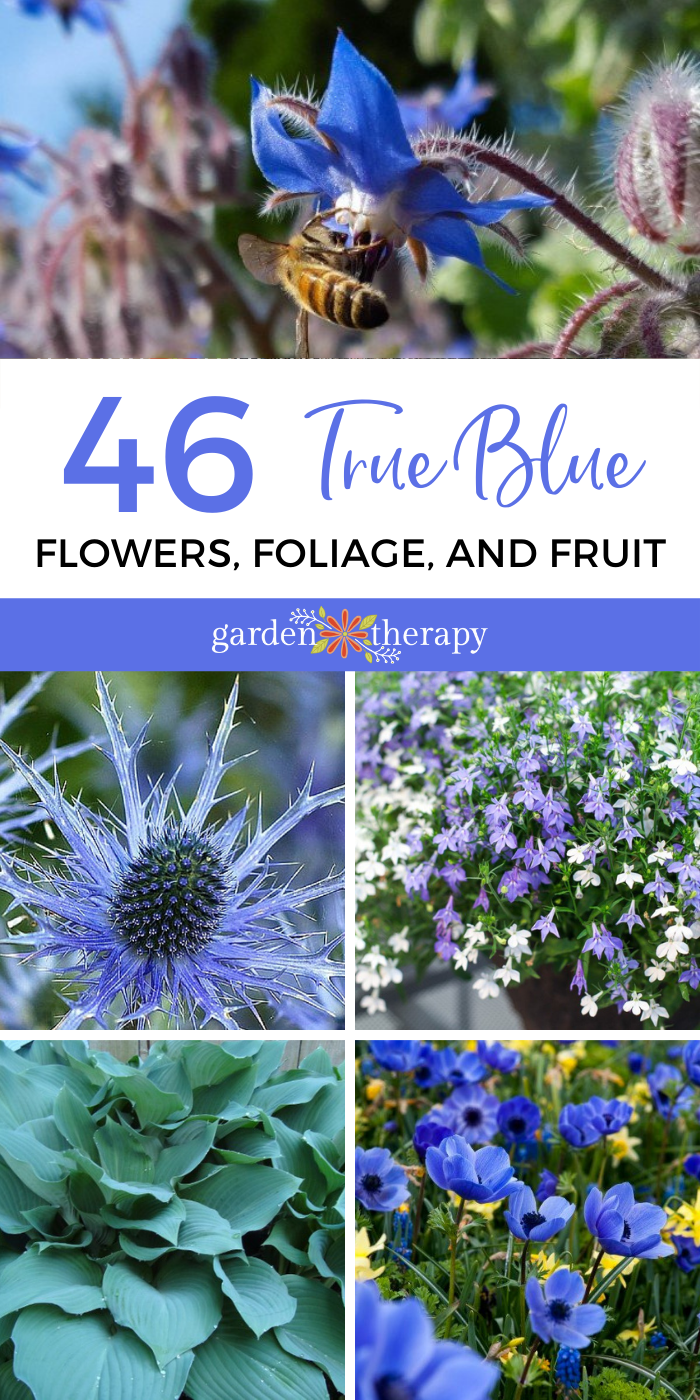
I’m taken with the idea of a monochromatic garden these days. Combine that with the fact that I’ve been on the hunt for true blue plants and I’m obsessed with blue gardens. I mean, imagine a garden that is filled with blue flowers, blue foliage, and even blue fruit. Wouldn’t that look both serene and striking all at once?
Blue flowers popping up from blue-hued foliage would take your breath away. Imagine deep blue lobelia spilling across the ground while Sea Holly grows in spikes that look like they are made of cool blue ice. It certainly wouldn’t be a boring garden.
You can choose so many different shades of the brilliant colour. The happy, bright, cornflower blue of hydrangeas (or cornflowers), the deep moody blue-black of blueberries. Purple hues. Greenish hues. And colours that have a category all to themselves: the gray/green/blue of eucalyptus.
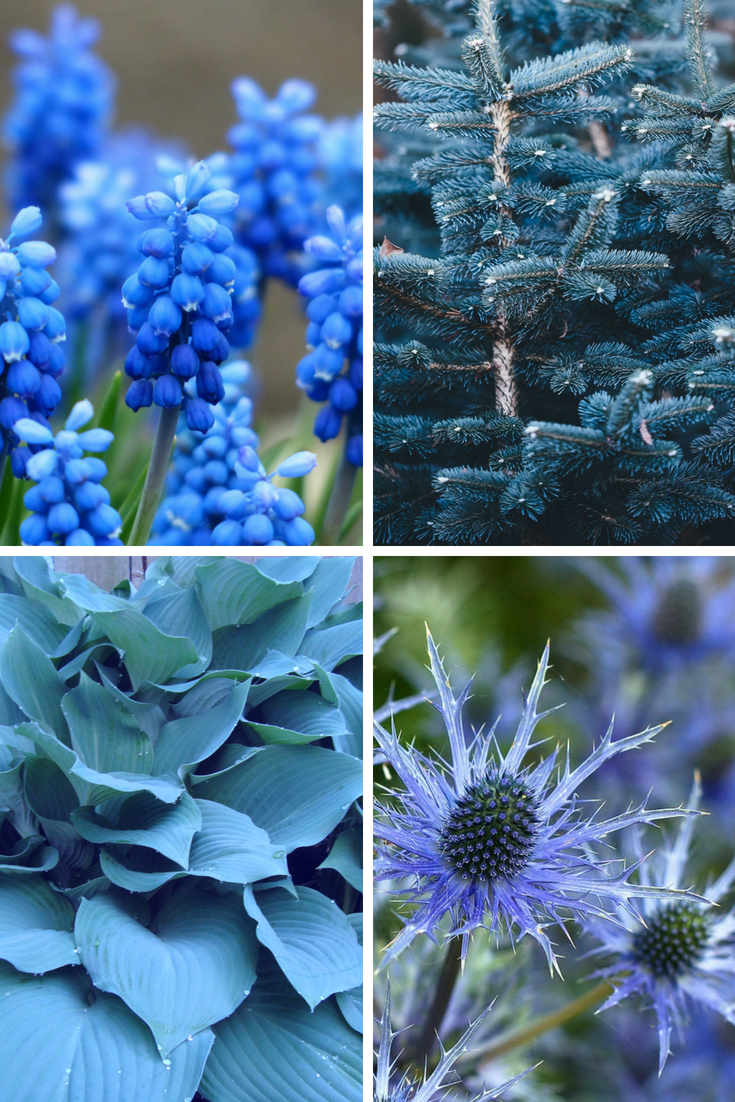
What Do Blue Flowers Symbolize?
If red means romance and white means purity, what does a blue flower have to say? Blue has always been known for its calming nature. The deep tones of blue flowering plants have a sense of serenity to them. While we say we’re feeling blue, the colour itself actually helps to show support and calm the spirits.
There’s even more to discover! Click here to learn more about symbolism in flowers.
What’s the Rarest Blue Flower?
Witnessing a blue plant in nature is rare. Only 10% of all flowering plants on earth can be found in the shade blue. Most of the blue plants you see come in shades of purple or green. This is because plants can’t produce a true blue pigment. Instead, they combine other pigments with minerals and shift the pH to create a blue hue.
Of all the blue flowers out there, the blue rose is the most elusive. Unfortunately, blue roses are not a true product of nature. When you find a blue rose in a bouquet, florists actually turn white rose petals blue by placing the stems in dye.
However, the blue rose came into existence in 2003 due to genetic engineering. The Japanese company, Suntory, and the Australian company, Florigene, combined forces and after a reported 20 years of work, genetically created a blue rose.
Made from adding the blue pigment delphinidin to a white rose, it’s actually more of a lavender or mauve colour. Their rarity comes with a price. Each stem for a Suntory ‘blue’ rose costs $35 US dollars!
Due to their extreme rarity, and non-existence for the better part of human existence, the blue rose has represented mystery and longing for something that can never be attained. The good news is, there are plenty of true blue plants out there for us all to enjoy.
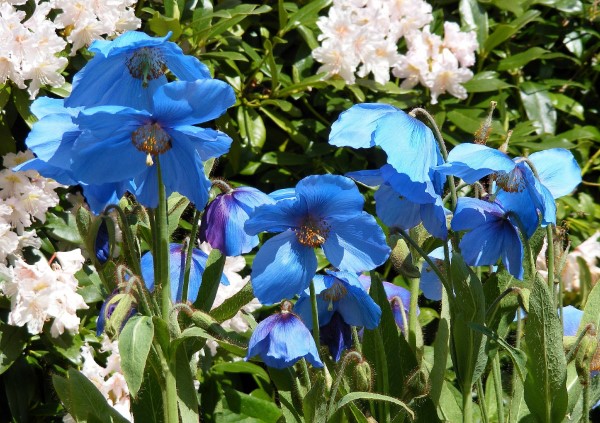
46 True Blue Plants
Here is a list I put together of some of my favourite blue garden plants. I looked for unique and common blue garden plants and am so taken with what we have available to us. Thank you, Mother Nature!
Blue Annual Flowers
Annual flowers are known for providing bold pops of colour during the summer months. Create your own monochromatic bed with these blue garden flowers.
- Morning Glory (Evolvulus ‘Heavenly Blue’)
- Larkspur (Delphinium ‘Magic Fountain’)
- Bachelor’s Button (Centaurea ‘Blue Boy’)
- Lobelia (Lobelia ‘Regatta Marine Blue’)
- Verbena (Verbena ‘Temari Patio Blue’)
- Salvia (Salvia farinacea ‘Victoria blue’)
- Petunia (Petunia x hybrida)
- Pansy (Viola tricolor var. hortensis ‘True Blue’, Blue Blotch, and Neon Violet))
- Browallia (Browallia speciosa ‘Blue Lady’)
- Calibrachoa (Calibrachoa ‘Superbells Blue’)
- Bacopa (Sutera cordata ‘Blutopia Blue’)

Blue Perennial Flowers
Doesn’t ever-lasting blue blooms sound lovely? Make a blue garden a commitment by planting some of these perennial blue garden flowers.
- Hydrangea– note: if your blue hydrangea is turning pink, you can change it back by controlling the acidity of your soil
- Clematis (Clematis ‘Cezanne’)
- Blue Flag Iris (Iris versicolor)
- Cranesbill (Geranium ‘Johnson’s Blue’)
- Passionflower (Passiflora ‘Blue Bouquet’)
- Grape Hyacinth (Muscari aucheri ‘Blue Magic’)
- Bellflower (Campanula ‘Sarastro’)
- False Forget-Me-Not (Brunnera ‘Jack Frost’)
- Windflower (Anemone coronaria ‘Lord Lieutenant’)

- Springstar (Ipheion uniflorum ‘Froyle Mill’)
- Lily of the Nile (Agapanthus ‘Hoyland Chelsea Blue’)
- Himalayan Blue Poppy (Meconopsis betonicifolia ‘Lingholm’)
- Dutch Hyacinth (Hyacinthus orientalis ‘Blue Tango‘)
- Flax (Linum lewisii ‘Saphyr’)
- Hummingbird Sage (Salvia guaranitica ‘Kobalt’)
- Veronica (Veronica spicata ‘Blue Bomb’)
- Catmint (Nepeta spp. ‘Select Blue’)
- False Indigo (Baptisia australis)
- Blue Star (Amsonia tabernaemontana ‘Blue Ice’)
- Rose of Sharon (Hibiscus syriacus ‘Blue Chiffon’)
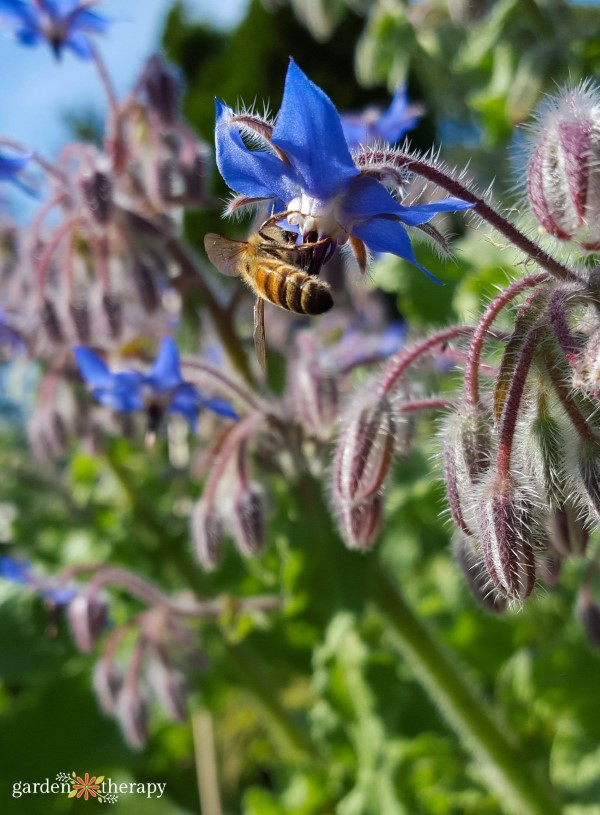
Blue Foliage
Even more rare than a blue flower is a blue leaf. Most blue foliage comes from tropical plants. Here are a few notable ones:
- Hosta (Hosta ‘Blue Hawaii’)
- Sea Holly (Eryngium ‘Blue Star’)
- Yucca (Yucca ‘Adam’s Needle’)
- Century Plant (Agave ‘Sharkskin’)
- Spurge (Euphorbia ‘Mediterranean’)
- Stonecrop (Sedum ‘Blue Spruce’)
Blue Edibles
Looking to grow your own food? You can add a hint of blue to your palate with these edible blue plants.
- Borage (Borago officinalis)
- Kale (Brassica oleracea ‘Lacinato’)
- Lavender (Lavandula angustifolia ‘Hidcote’)
- Blueberry (Cyanococcus ‘Bluecrop’)

Blue Shrubs and Trees
You don’t have to think small when it comes to growing blue plants. These trees and shrubs will complement your blue garden wonderfully.
- California Lilac (Ceanothus ‘Frosty Blue’)
- Blue Spruce (Picea pungens ‘Montgomery’)
- Eucalyptus (Eucalyptus ‘Azura’)
- Juniper (Juniperus ‘Wichita Blue’)
- Noble Fir (Abies procera ‘Glauca’)
I’m still on the hunt for an all-blue garden to dive into. Someday, if I don’t come across one, perhaps I will create one in my own small space. Until then, I’ll enjoy all the blue plants I come across!

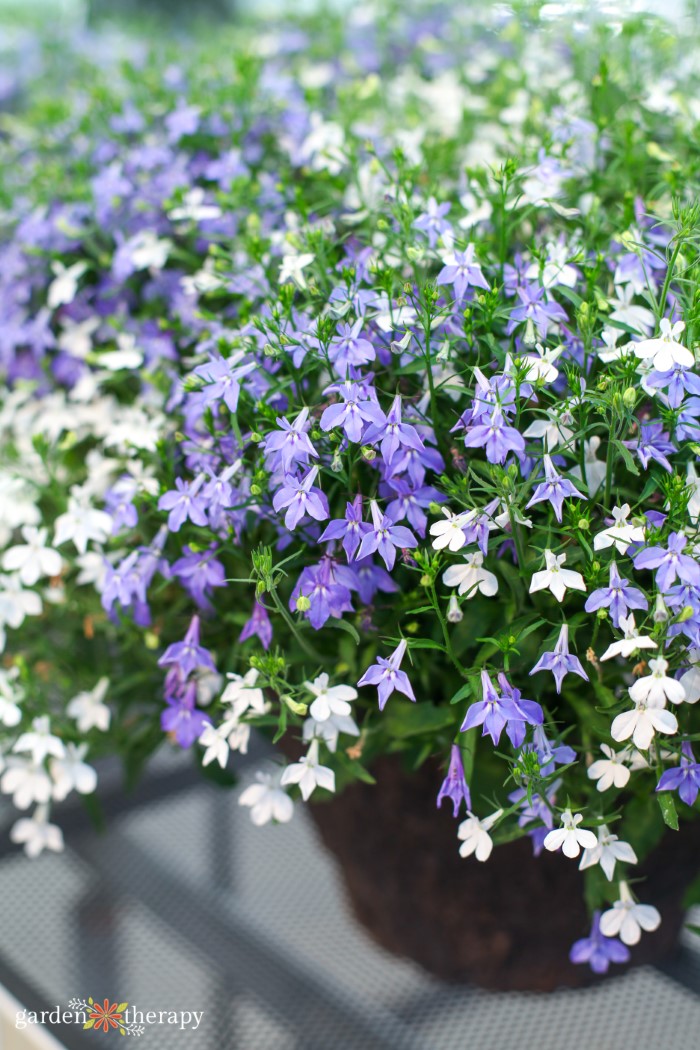
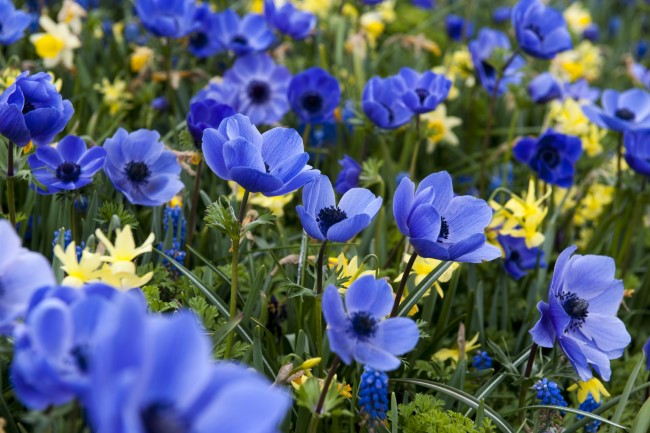
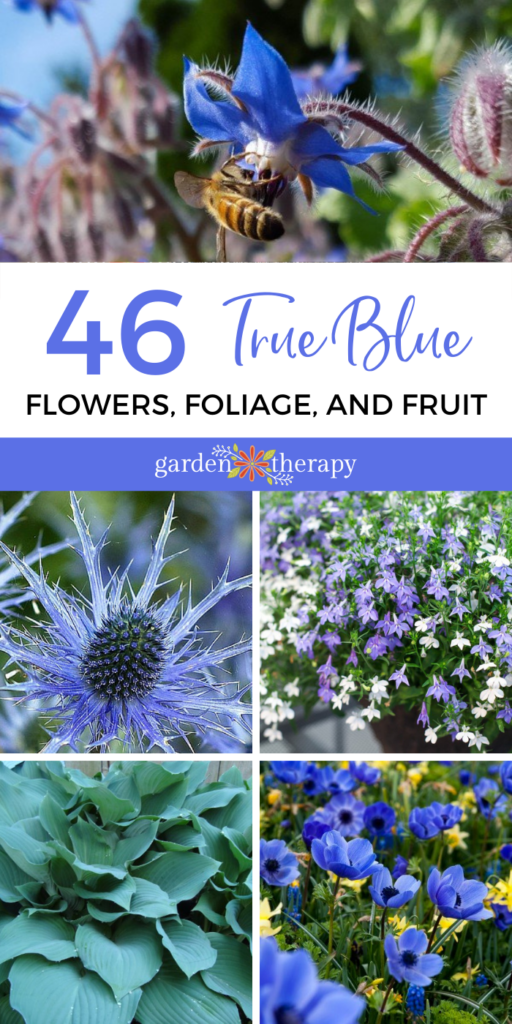



These are such pretty blues! I’ve considered adding blues, but my soil never allows anything to come out super blue. It’s frustrating, but I guess some blue is better than none! :)